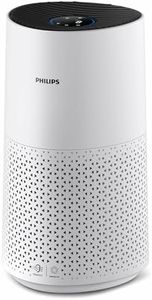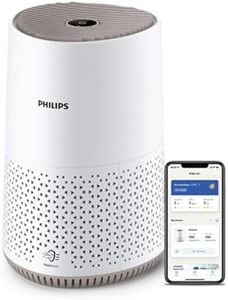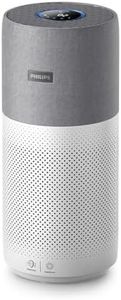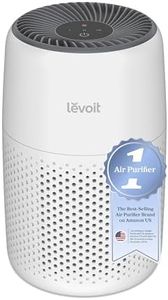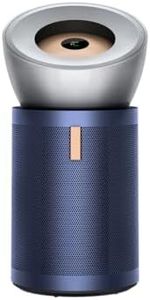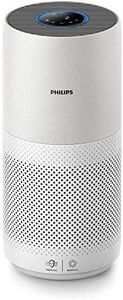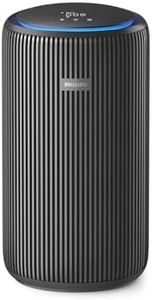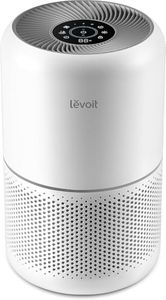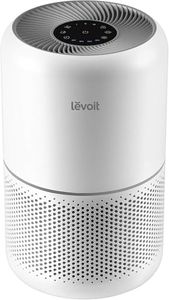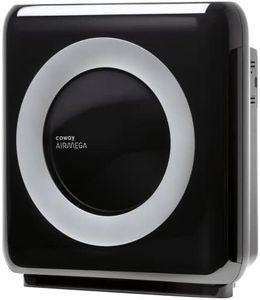We Use CookiesWe use cookies to enhance the security, performance,
functionality and for analytical and promotional activities. By continuing to browse this site you
are agreeing to our privacy policy
10 Best Asthma Air Purifiers
From leading brands and best sellers available on the web.Buying Guide for the Best Asthma Air Purifiers
Choosing an air purifier for asthma can feel overwhelming because of the many options available, but the key is to focus on filtering efficiency and features that make a real difference in reducing asthma triggers. Start by considering the space you need to purify and think about what specific allergens or pollutants trigger your symptoms. The right air purifier should help reduce asthma attacks by lowering the amount of dust, pollen, pet dander, smoke, and other irritants in the air. Focusing on the key features below will help you better understand what matters most for your situation.HEPA FilterA HEPA filter stands for High Efficiency Particulate Air filter, and it is designed to capture at least 99.97% of particles as small as 0.3 microns, such as dust, pollen, and pet dander. This is important for asthma sufferers because many common triggers for asthma are this size or larger, so a quality HEPA filter can dramatically reduce exposure. When looking at HEPA filtration, you might see 'True HEPA' or just 'HEPA-type'; make sure you choose one labeled 'True HEPA' for maximum effectiveness. If your asthma is mainly triggered by airborne particles, prioritizing a genuine HEPA filter is essential.
CADR (Clean Air Delivery Rate)CADR stands for Clean Air Delivery Rate, which measures how quickly an air purifier can filter the air of common pollutants like dust, pollen, and smoke. A higher CADR means the device can clean air in a room more rapidly and efficiently. Generally, small rooms can use lower CADR ratings, while large rooms need higher ratings. Pick a unit with a CADR appropriate for the size of your room; if you have severe asthma or want faster cleaning, lean toward higher CADR values within your size range.
Room Size CoverageRoom size coverage shows the maximum space (usually in square feet or meters) an air purifier can effectively clean. This helps you match an air purifier to your actual living or sleeping area. Some units are designed for small bedrooms, while others can handle large living spaces. Measure the room where you'll use the purifier most, then select a model that can handle slightly more than that space for optimal results, especially if your asthma is easily triggered.
Activated Carbon FilterAn activated carbon filter is included in many air purifiers to remove gases, odors, and chemical pollutants that a HEPA filter cannot catch, such as smoke or volatile organic compounds (VOCs). This is important for asthma sufferers sensitive to odors, smoke, or chemical fumes. Not every air purifier has this filter, so if you notice your asthma worsens with cooking smells or chemical cleaners, definitely look for a model with a good quality activated carbon filter.
Noise LevelNoise level refers to how loud the air purifier operates, typically measured in decibels (dB). This is important for bedrooms or quiet environments, particularly if you plan to use the purifier while you sleep or concentrate. Low noise levels are generally considered around 25-30 dB, which is similar to a whisper, while higher settings can be noticeable. If you are sensitive to noise or need the purifier in a bedroom, look for models with a 'quiet mode' or low dB ratings.
Filter Replacement IndicatorA filter replacement indicator is a feature that notifies you when it’s time to change or clean the filters. Proper maintenance is crucial since a dirty filter doesn’t clean air effectively and could even circulate trapped allergens. For convenience and peace of mind, especially if you have busy routines or children, this feature can help ensure your air purifier is always working optimally for your respiratory health.
